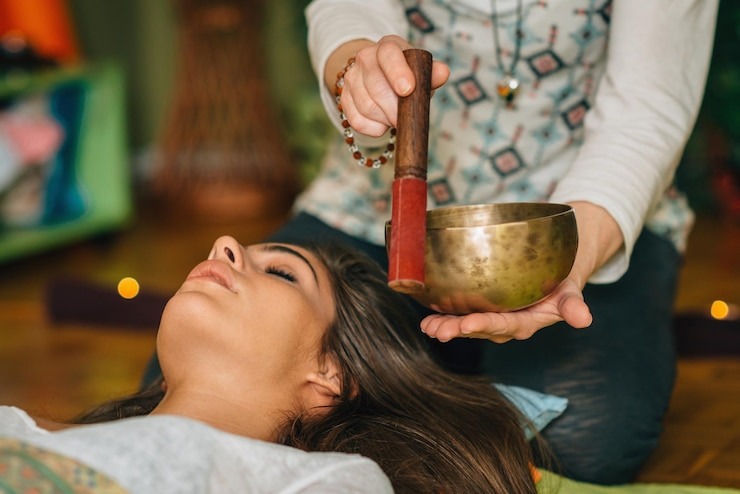In today’s fast-paced world, where stress, anxiety, and physical ailments have become all too common, people are increasingly turning to ancient healing practices for holistic wellness. Ayurveda, the ancient Indian system of medicine, offers a profound approach to health that addresses both the body and mind. One of the most potent therapies within Ayurveda is Panchakarma, a detoxification and rejuvenation process that not only cleanses the body of toxins but also restores balance and vitality to the mind.
Panchakarma, which translates to “five actions” in Sanskrit, consists of treatments designed to eliminate accumulated toxins (ama) from the body and restore the natural state of equilibrium. While it is renowned for its physical benefits, such as improved digestion, immunity, and skin health, ayurvedic panchakarma treatment also holds immense potential for mental healing and emotional well-being.
Understanding Panchakarma
Preparation (Purvakarma): Before undergoing Panchakarma, individuals undergo preparatory measures to loosen toxins and prepare the body for elimination. This phase typically includes dietary modifications, herbal therapies, and oil massages to mobilize toxins from deeper tissues towards the gastrointestinal tract.
Primary Therapies (Pradhan karma): The core Panchakarma treatments involve five primary actions:
Vamana (Therapeutic Emesis): This procedure involves ingesting herbs followed by therapeutic vomiting to eliminate excess Kapha (phlegm) from the body, relieving congestion and promoting respiratory health.
Virechana (Therapeutic Purgation): Administered through herbal laxatives, Virechana helps remove accumulated Pitta (bile) and toxins from the intestines, improving digestion, liver function, and skin health.
Basti (Therapeutic Enema): Enemas infused with herbal decoctions or oils cleanse the colon, balance Vata (air), alleviate constipation, and nourish the body’s deeper tissues.
Nasya (Nasal Administration): Nasya involves the application of herbal oils or powders into the nasal passages to clear sinus congestion, improve respiratory function, and promote mental clarity.
Raktamokshana (Bloodletting): Though less common today, this procedure aims to purify the blood by removing impurities through leech therapy or venesection techniques.
Post-Treatment Care (Paschatkarma): Following the primary therapies, individuals undergo post-treatment measures to rejuvenate the body and fully integrate Panchakarma’s benefits. This includes dietary recommendations, lifestyle modifications, and herbal formulations to support ongoing detoxification and maintenance of balance.
Mental Health Benefits of Panchakarma
Stress Reduction: Panchakarma treatments, particularly oil massages (Abhyanga) and Shirodhara (continuous oil pouring on the forehead), induce deep relaxation, calm the nervous system, and alleviate stress, anxiety, and insomnia.
Emotional Healing: By eliminating physical toxins and balancing the doshas (bioenergies), ayurvedic treatment for mental health helps to release emotional blockages stored in the body, fostering emotional resilience, clarity, and inner peace.
Enhanced Cognitive Function: Nasya therapy, which targets the nasal passages and brain, improves mental clarity, concentration, and memory, making it beneficial for conditions like ADHD and cognitive decline.
Balanced Mood: The purification of the blood and nervous system through panchakarma detoxification promotes hormonal balance and neurotransmitter function, reducing mood swings and depression.
Choosing the Best Ayurvedic Panchakarma Treatment
When seeking the best Ayurvedic panchakarma treatment for mental and physical healing, it’s essential to select a reputable Ayurvedic centre or practitioner who offers personalized treatment plans based on your unique constitution (Prakriti) and imbalances (Vikriti). Additionally, consider the following factors:
Qualified Practitioners: Ensure that the practitioners administering Panchakarma treatments are well-trained, experienced, and knowledgeable in Ayurveda and Panchakarma therapies.
Hygiene and Safety: Prioritize centres that adhere to strict hygiene standards, use quality herbal formulations, and provide a safe and supportive environment for your healing journey.
Comprehensive Approach: Look for centres that offer a holistic approach to wellness, incorporating diet, lifestyle, yoga, meditation, and other Ayurvedic therapies alongside Panchakarma for long-term benefits.
Client Testimonials and Reviews: Research the Ayurvedic centre’s or practitioner’s reputation by reading client testimonials, reviews, and success stories to gauge the effectiveness and quality of their services.
Conclusion
Ayurvedic panchakarma treatment is a profound healing modality that detoxifies the body and rejuvenates the mind, offering a holistic approach to mental and physical well-being. By undergoing Panchakarma therapy under the guidance of qualified practitioners, individuals can experience profound shifts in their health, gaining clarity, vitality, and emotional balance that enhance their quality of life for years to come. Embrace the wisdom of Ayurveda and embark on a transformative journey towards optimal health and vitality with Panchakarma.

